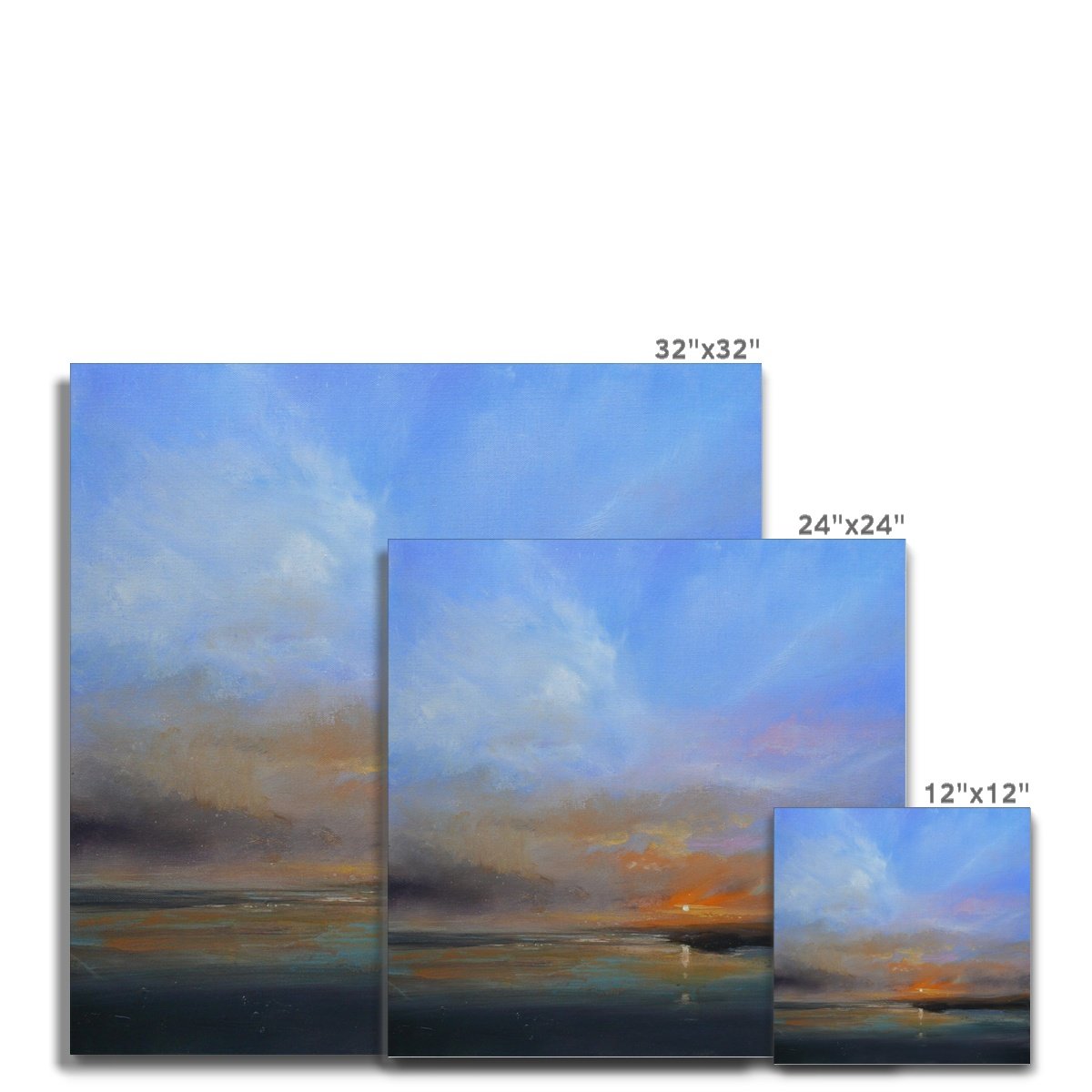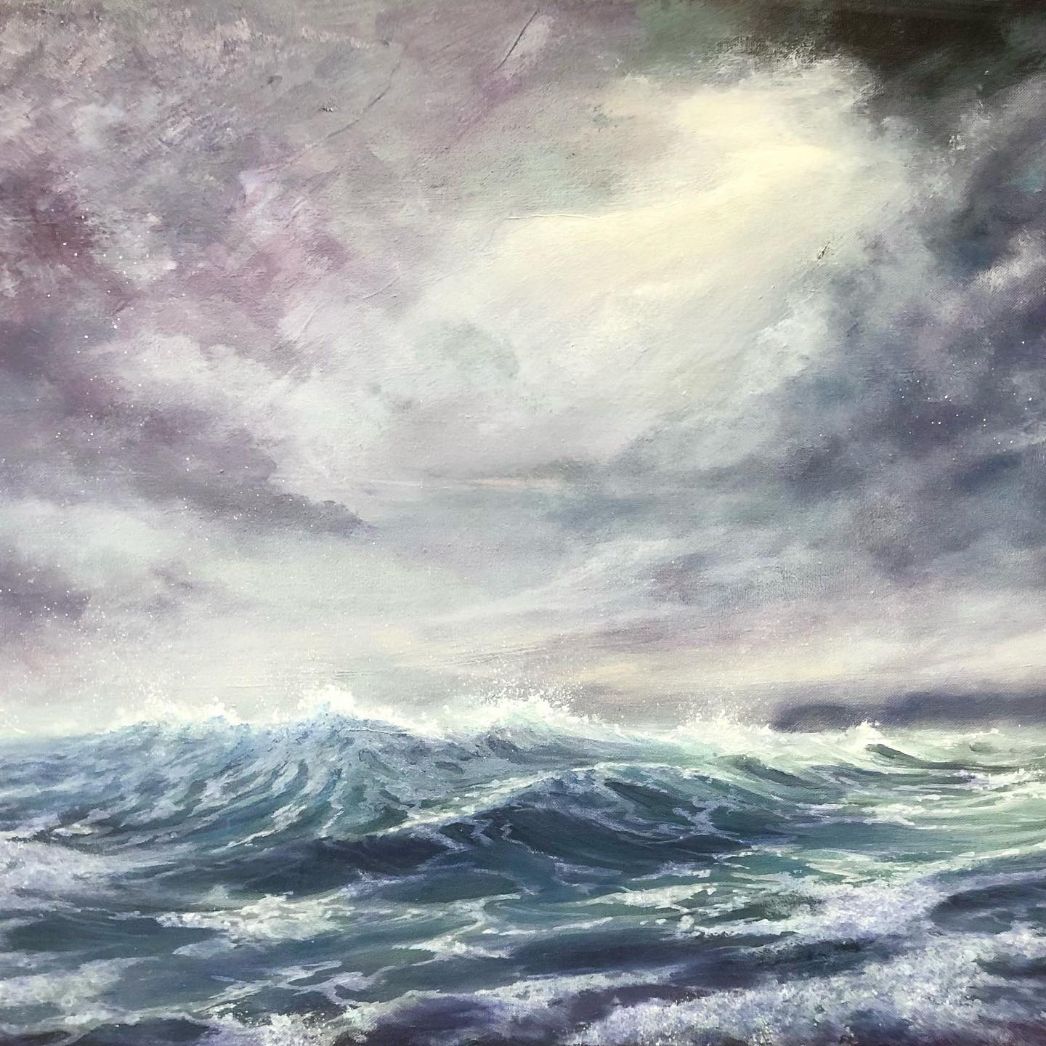Tips for Painting Successful Sunsets: Avoiding Common Pitfalls
Sunsets are among the most inspiring and breathtaking subjects for artists, with their vibrant colours, shifting light, and dramatic skies. Yet, capturing their beauty on canvas can be surprisingly challenging. Many artists find themselves frustrated with muddy colours, flat compositions, or a lack of that luminous glow that makes sunsets so captivating. If you’ve ever faced these struggles, you’re not alone—but there are ways to overcome them.
Here are some helpful tips to guide you in painting successful sunsets, along with advice on avoiding common pitfalls.
1. Understand the Colours of a Sunset
One of the most common issues when painting a sunset is not getting the colours quite right. It’s easy to end up with a sky that looks artificial or a palette that turns muddy. The key is to observe and understand the subtle gradations of colour that occur as the sun sets.
Tip: Start by studying real sunsets, either in person or through reference photos. Notice how the colours shift from warm oranges and reds near the horizon to cooler purples and blues as you move higher into the sky. Use a limited palette to mix these hues, ensuring that each colour transitions smoothly into the next. Avoid using too many different pigments, as this can lead to unwanted muddiness.
2. Master the Art of Blending
A successful sunset painting often relies on smooth transitions between colours. However, achieving this can be tricky, especially if you’re working acrylics, which dry very fast.
Tip: Work wet-on-wet to create soft, seamless gradients in your sky. Use a large, soft brush to gently blend colours together while they’re still wet. For oils you have plenty of blending time, with acrylics you can extend the drying time by using a slow-drying medium (a retarder), which will give you more time to blend. Misting your palette with a water spray or using a stay wet palette can also help keep the paint workable longer. Be patient, and build up your layers gradually to avoid harsh lines or abrupt changes in colour.
3. Capture the Light and Glow
One of the most magical aspects of a sunset is the way it glows with light. But translating that luminosity into paint can be a challenge. Many artists struggle with skies that look dull or lifeless because they’ve overworked the paint or haven’t achieved the right balance of values.
Tip: Focus on the values (lightness and darkness) in your sunset as much as the colours. The brightest part of your painting should be where the sun is or where its light is most concentrated. Surround this area with darker, more muted colours to enhance the sense of glow.
You can also use thin, transparent layers known as glazes, over areas of dry underpainting, to build up the intensity of the colours gradually. (Glazing is a whole topic for another blog post though!)
4. Don’t Forget the Foreground
A sunset sky can be stunning on its own, but a well-chosen foreground can add depth, context, and drama to your composition. However, it’s important to ensure that your foreground elements don’t overpower the sky or distract from the main focus.
Tip: Choose simple, silhouetted shapes for your foreground, such as trees, mountains, or water, which complement the sky without competing with it. Keep these elements darker and less detailed, allowing the vibrant colours of the sunset to remain the star of the show. If you’re adding reflections, such as those in a body of water, remember to soften the edges and blend the colours to suggest movement and shimmer.
5. Avoid Overcomplicating the Scene
It’s tempting to include every beautiful detail you see in a sunset, from every cloud formation to every subtle change in colour. However, trying to do too much can lead to a painting that feels cluttered and overwhelming.
Tip: Simplify your composition. Focus on the key elements that convey the mood and atmosphere you want to capture. Limit the number of colours and shapes in your painting, and use them strategically to guide the viewer’s eye. Sometimes, less is more, especially when it comes to creating a sense of peace and serenity in your work.
6. The 3P's! - Practice, Patience and Persistence
Painting sunsets requires all three! It’s easy to become discouraged if your first attempts don’t turn out as you envisioned. However, every painting, whether successful or not, is a valuable learning experience.
Tip: Don’t be afraid to experiment and make mistakes. Each time you paint a sunset, you’ll gain a better understanding of how to mix colours, blend transitions, and capture light. Take the time to step back and evaluate your work as you go, making adjustments as needed, and most importantly, enjoy the process of creating.
Final Thoughts
Painting a spectacular sunset is a rewarding challenge that can push your artistic skills to new heights. By understanding the common pitfalls and applying these tips, you’ll be better equipped to create sunset paintings that are not only beautiful but also full of emotion and life.
Remember, the key to success lies in observation, practice, and a willingness to embrace the unique qualities of each sunset you paint. Keep exploring, keep experimenting, and most importantly, keep painting!
If you'd like to see all these elements in action, why not watch my Online Masterclass 'Paint A Spectacular Sunset', it's only £24.99 and is packed full of tips and techniques to help you achieve a glowing artwork!
CLICK HERE TO BUY THIS CLASS NOW!
















